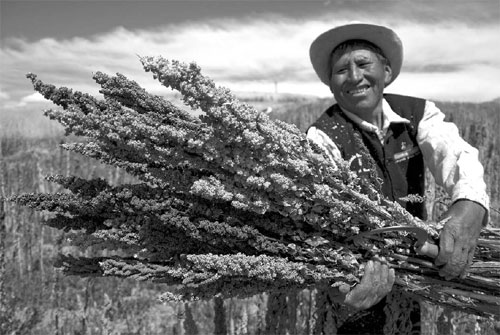Country's rich bounty is now available to the Chinese market
Eight years ago the South American nation negotiated a sanitary protocol with China, allowing Peruvian table grapes passage across the Pacific Ocean
While five containers of the Red Globe variety were exported during the first year, in the recent 2014-2015 grape harvest over 9 million boxes of Peruvian grapes (4,010 containers) reached Chinese consumers.
However, this is just the beginning. Facing each other across the Pacific Ocean, Peru and China have a lot to gain by developing a steady flow of fresh fruits and vegetables from the coastal regions of Peru to the discerning Chinese consumers, and the 2010 Free Trade Agreement has immensely contributed to this expansion in bilateral trade.
Peru's coast is a natural greenhouse. No rainfall during most of the year has created a narrow strip of deserted coast that has no risk of floods. Sunshine and temperatures are steady all year round, so in order to bring the desert to life, successive Peruvian governments have developed irrigation projects that span from the northern regions of Tumbes and Piura, all the way down to the southern border town of Tacna.
Today, Peru is producing not only grapes, but also mangoes in the north (Piura), citrus in the southern region of Ica, and many more produce in between such as asparagus, avocados, blueberries, pomegranates, custard apples, golden berries among other fruits and vegetables.
Peru is currently the number one exporter of asparagus worldwide, and ranks highly for mangoes, avocados and grapes. Large Peruvian agricultural corporations are betting on the future by planting thousands of hectares of blueberry and pomegranate groves among other fruits.
Peruvian mangos made their debut this past March, flown in direct to China, and they've been met with favorable acceptance in markets such as Shanghai due to their freshness and sweet taste. The same reaction is expected later in 2015 for asparagus and avocados.
Premier Li Keqiang made a dedicated visit this past May to four South American countries, among them Peru. During his stay in Lima he witnessed the signing ceremony of the avocado sanitary protocol that grants the product to be shipped to selective young Chinese consumers that are discovering this fruit to be a natural source of good fats and oils, has a delicious taste and is ready to eat.
But Peru's ability to farm the land is not only limited to the coast, as extensive areas in the mountainous Andes are also being sown with maca, quinoa, chia and other organic and native products that are greatly coveted by Chinese men and women.
Maca has become such a hit among Chinese consumers that many Chinese companies are now flocking to Peru interested in importing and investing in this bulb.
In 2013, Peru exported a mere $20,000 of maca directly to China. By 2014, the number had grown to over $2 million. In 2015, that figure has almost tripled.
The same goes for the Peruvian Amazon region. Products such as passion fruit, camu camu, sacha inchi (from which a fine oil of high-content of Omega 3 and Omega 9 is extracted), are being developed commercially to reach foreign consumers. Camu camu is a fruit native to the Peruvian Amazon region that has 30 to 60 times the content of Vitamin C than traditional oranges.
In the following years it will come as no surprise that Chinese supermarkets, e-commerce platforms, fresh markets and shops will carry Peruvian produce and products, repeating the same success as the grape story.
So the next time a Chinese consumer goes to the market, just remember: "Whatever You Need Is Now Grown in Peru".
All stories on this page provided by International Investment Guide.
|
Quinoa harvest in Peru, a nation that is a major source of food for the world. Provided to China Daily |
(China Daily 09/01/2015 page11)















